WISDOM DISPLAYED IN WATER SYSTEM PROJECTS
Sui Dynasty
Water system projects are closely related to rivers and directly influence human activities. With the focus shift of the nation’s agricultural economy, the construction of water system projects has gradually moved from the Yellow River Basin to the Huai River, Yangtze River and Pearl River (Zhujiang River) basins.
Preconditioned by the geographical location and the predominant agricultural economy, the Chinese developed a unique system of water works, which included taming the water and preventing flood, mostly the lower reaches of the Yellow River; irrigation for farm land; water system for transportation, which included a water transport system that linked rivers such as Hai River, Yellow River, Huai River, Yangtze River and Pearl River.
As early as the Xia Dynasty the Chinese acquired primitive way of irrigating the fields. By the Western Zhou Dynasty a preliminary form of water system was developed that could reserve and channel water, irrigate fields and discharge water when it overflowed. By the time of the Spring and Autumn and the Warring States periods a number of large scale irrigation system works, such as Dujiangyan and Zhengguoqu, had been completed. These irrigation system works facilitated the agricultural development in China’s Central Plains and the western part of Sichuan. Irrigation works for farm fields were available across the Yellow River plain and the northwestern part of China in the Sui and Tang dynasties. Tongjiqu and Yongjiqu completed under Emperor Yangdi (569–618) of the Sui Dynasty facilitated the south-north bound water transportation, while the Grand Canal linking Bejing and Hangzhou became the main artery of south-north bound transportation.
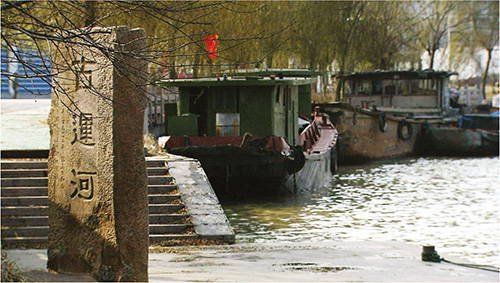
The Ancient Grand Canal
These water system works indicated that ancient Chinese had clear understanding of the characteristics of the rivers they were working with and made renovations based on their understanding of the laws of nature. These works were manifestations of the Chinese philosophy of the harmony between man and nature. Many ancient water system works have been in use for thousands of years, which have improved the natural environment of a region. For instance, the two-thousand-year-old Dujiangyan has created the affluent tianfu zhiguo, or the Land of Abundant, on the Chengdu Plain.
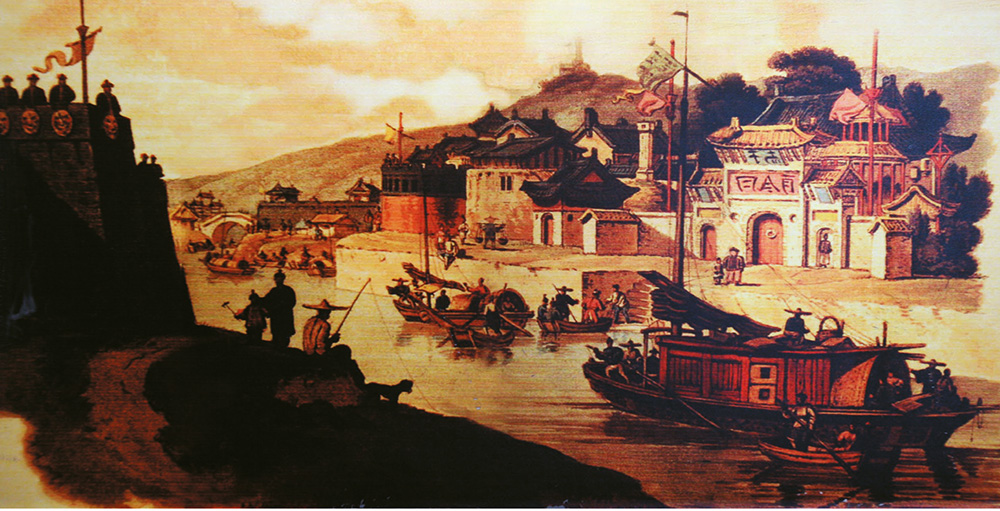
The Grand Canal
The Grand Canal Linking Beijing to Hangzhou
China is the first country to dig canals in the world. First constructed in the Spring and Autumn Period, the Grand Canal kept expanding thanks to the effort of subsequent generations. The Sui and Yuan dynasties witnessed the largest scale reconstruction. The canal was over 2,000 kilometers long, linking together five river systems of the Hai River, the Yellow River, the Huai River, the Yangtze River and the Qiantang River. It ran through a vast expanse that included today’s provinces of Hebei, Shandong, Henan, Anhui, Jiangsu and Zhejiang, constituting a north-south bound water transportation artery in the feudal dynasties of Chinese history. This Grand Canal is more than two thousand years old and is still in use today.
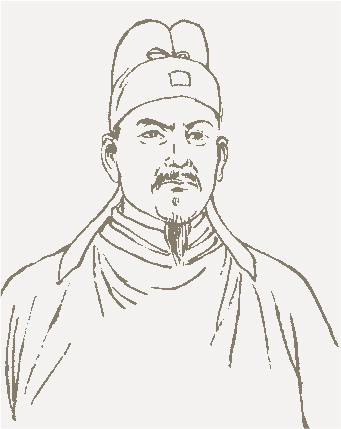
Guo Shoujing (1231–1316)
A famous scientist in the Yuan Dynasty. The maintenance and safeguard of the Grand Canal proved just as huge and complex as its construction. Guo Shoujing, who took charge of the reconstruction project in the Yuan Dynasty, made two great contributions to the Grand Canal: first, he set straight some winding parts of the canal, thus shortening the distance for navigation; second, he initiated a number of projects to clear the silts and channel new sources of water into the canal so that the water system ran more smoothly.
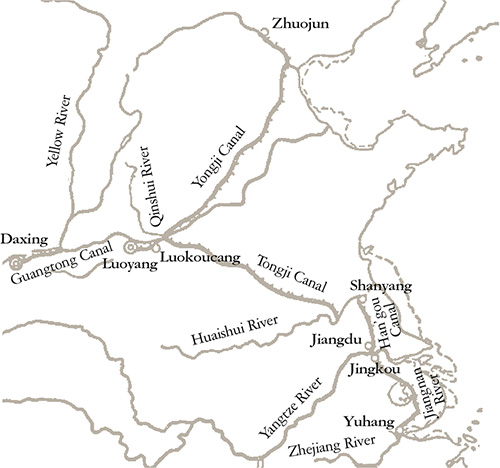
Map of the Grand Canal in the Sui Dynasty
Zhejiang River
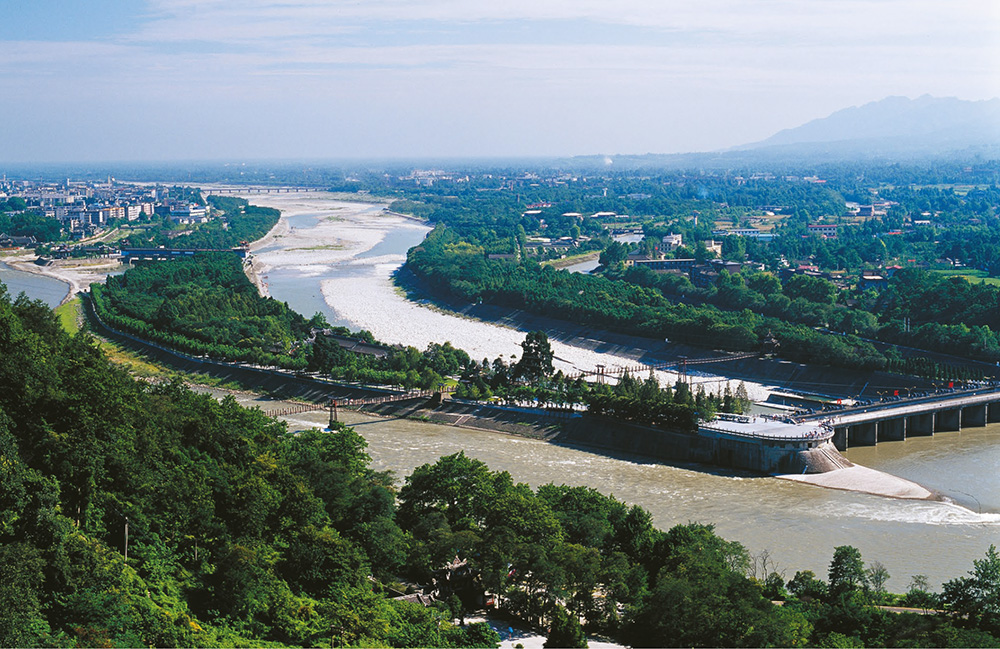
Dujiangyan Irrigation System
Dujiangyan Irrigation System
Located in Sichuan Province, Dujiangyan was an enormous irrigation system that channeled water without having to use a dam. It is one of the oldest large scale irrigation systems in the world that has been kept to this day. In the third century BC while a governor of Shu (Sichuan Province today), Li Bing made thorough investigations about the Min River and decided to start an irrigation system at the top of Chengdu Plain where the principal stream of the Min River ran down the mountain. The construction proved difficult but was eventually completed as what we know now Dujiangyan. More than two thousand years later Dujiangyan is still playing an important role in the irrigation of that area, which testifies to the appropriate selection of its geographical location and the appropriateness of its design. The whole project was so scientifically planned and coordinated that Dujiangyan was able to channel water for irrigation, tame the flood by using an opening in the mountain instead of building a dam to divert the water flow. These functions complemented each other and people are still enjoying the wisdom of their ancestors even to this day.

Lugou Bridge in Beijing
A granite bridge with a series of arches. It has a history of more than 800 years. A test was once done to see how much weight it could endure. Amazingly, a flatbed vehicle carrying 429 tons of cargo rolled over the bridge, and the bridge still stood. Lugou Bridge is also well-known for the stone lions on both sides. Big or small, male or female, they are executed with vivid features and no two lions look the same. Some people say, “The number of lions on the Lugou Bridge is too great to keep track of.” There are about four or five hundred lions engraved on the columns of the bridge. Indeed too many to count.
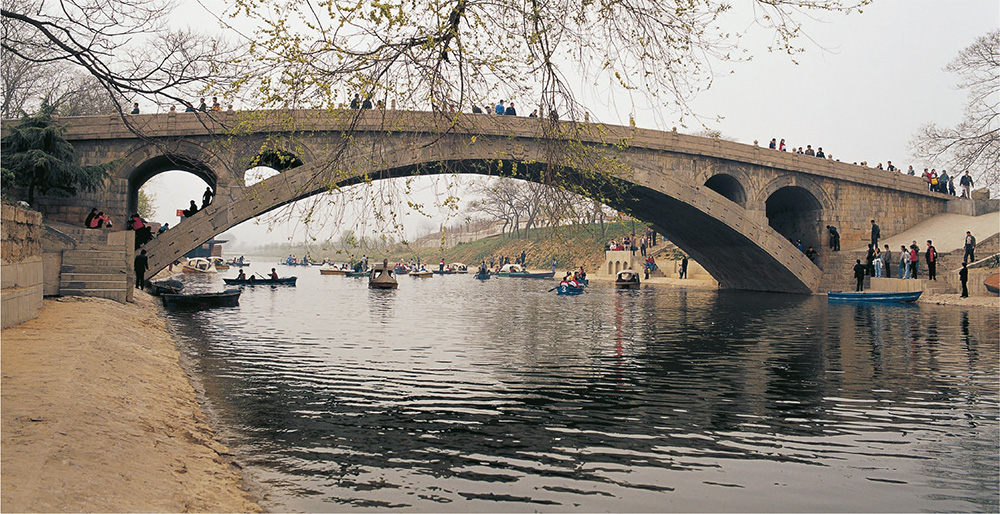
Zhaozhou Bridge in Shijiazhuang, Hebei Province
It is the world’s oldest surviving stone bridge that has been preserved intact to this day. The bridge, which is more than 1,400 years old thanks to the incredible work of its designers, spans over the river with only one main arch, a stable design that allows maximum volume of water and minimizes the impact of flood water toward the bridge. The two smaller arches on each shoulder of the big arch not only help alleviate the weight of the bridge but also increase the volume of water under the bridge. They also make the structure of the bridge appear light and elegant.
Bridges in Ancient China
China is a big country with many rivers crisscrossing in its vast territory. This has made China a country with many bridges. People are often amazed at how many bridges were built in ancient China, their varieties, the exquisite executions and the beautiful designs. Craftsmen utilized their experience and wisdom to build bridge after bridge that was designed to accommodate the natural environment and cultural atmosphere. Some of the bridges were made close to perfection in terms of the application of mechanics, irrigation engineering and architectural aesthetics. These ancient structures have remained an important attraction to modern day China.
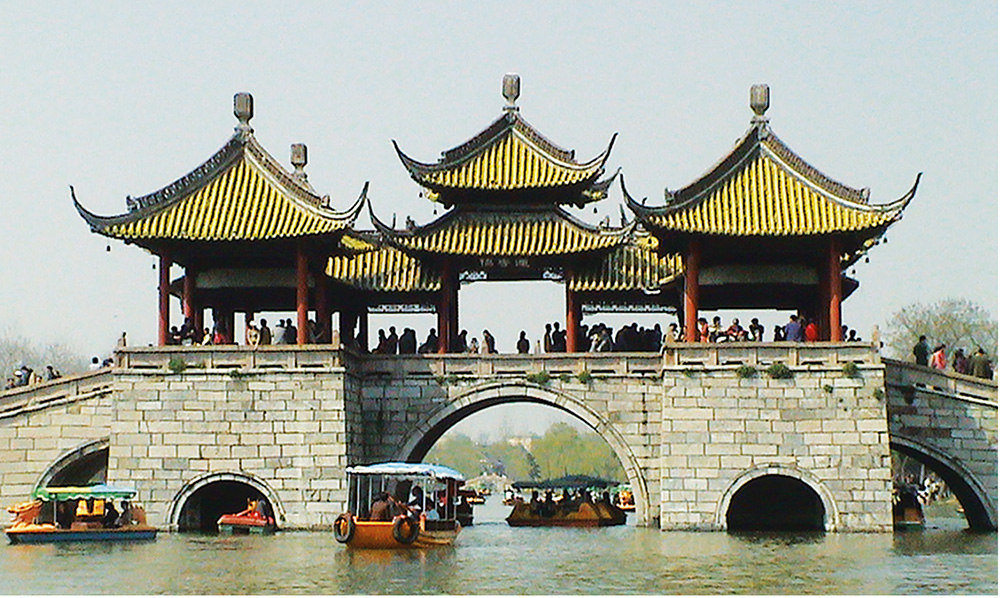
Wuting Bridge in Yangzhou, Jiangsu Province
First built in the eighteenth century, this stone arch bridge has a unique design to match the beauty of the Shouxi Lake (Slender West Lake). The plane of the bridge looks like the Chinese character 工 (gong). There are fifteen arches under the bridge and twelve piers of different sizes to support the bridge. On the bridge are five exquisite and elegant pavilions with glazed roofing tiles. One more thing worthy of note is the piers: they are made of slabs of blue stones whose crevices were filled with cement and juice of sticky rice.
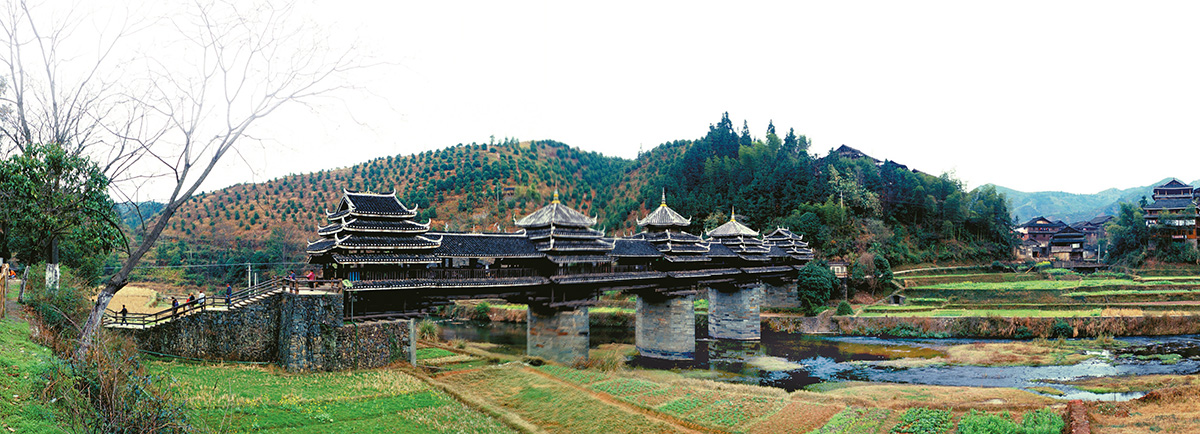
Chengyang Bridge in Sanjiang, Guangxi Zhuang Autonomous Region
Chengyang Bridge has five piers, with each pier crowned with a five-storied pavilion. Each pavilion is joined by a long corridor. In the rainy season in Guangxi, people can walk or take a rest on the bridge without being bothered by the rain. This bridge is thus given another name, “A Bridge Free of Rain and Wind.” In addition to the beautiful sight and the shelter they offer, these pavilions play a more important mechanical role: they were fixed on the end of the beam to balance off the weight placed on the beam.
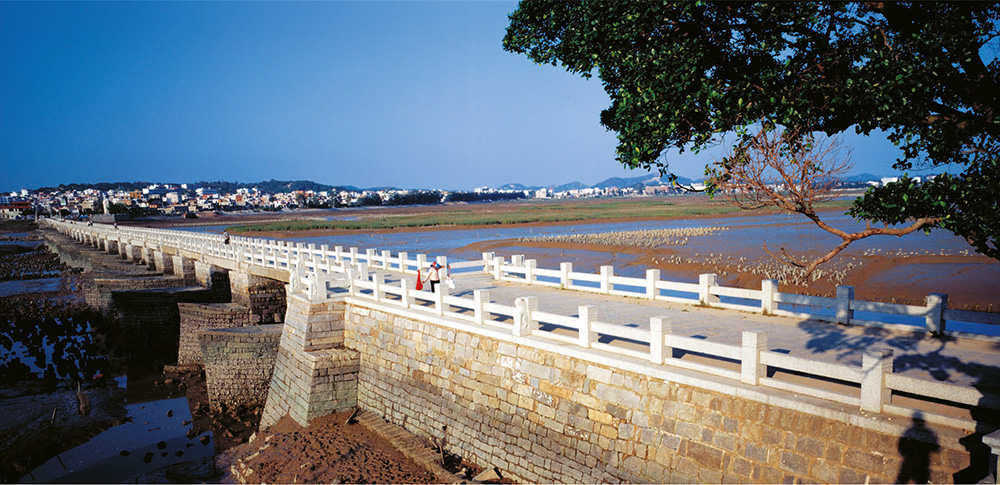
Luoyang Bridge in Quanzhou, Fujian Province
One of the first harbor bridges that were built with stone piers and stone beams in China. First built in 1041 as a floating bridge, it was reconstructed into a stone bridge in 1053. The bridge is best known for its boat-shaped piers with pointed heads, which were in fact an application of what we now call the theory of fluid mechanics. When the tides of the river and the sea rose they helped to facilitate the flow of the torrent. More interestingly, records show that stones were first laid under water to form the lower part of the piers, and in the meantime oysters were cultivated along the stone piers: the oysters were said to act as a living glue to cement the stone slabs to form a solid bulk.